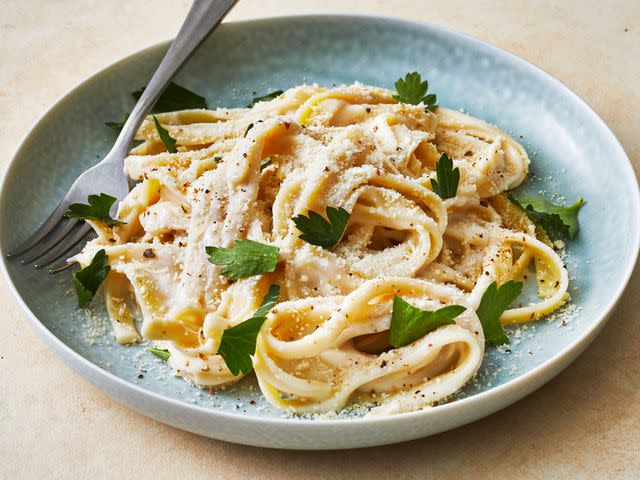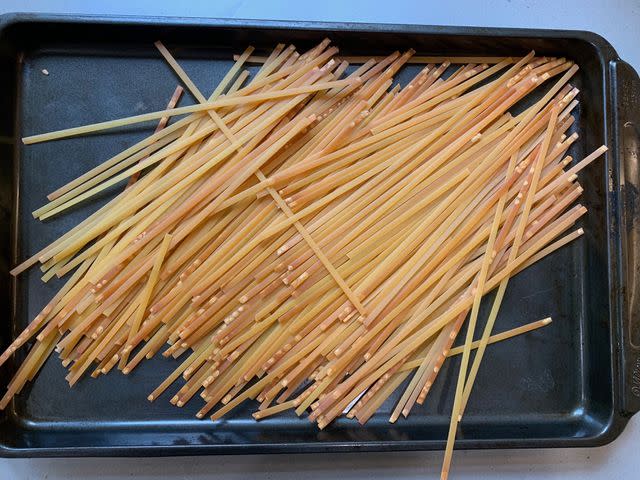The Secret to Making More Flavorful Pasta
You’ve probably never done this before.
When I made lunch for my kids last week, I made a dish that they know and love (fettuccine Alfredo) but tried a radically new technique (for me). I wanted to see if pre-toasting the pasta prior to boiling made it more flavorful.
Lately, I have read in a few places that this enhances the flavor in the same way that toasting grains (think quinoa, rice when making pilaf) and other ingredients (brown butter, flour in a béchamel) deepens their taste. But it still struck me as odd—dry pasta, toasted without any additional oil or seasonings? Would that turn out OK?

DOTDASH MEREDITH FOOD STUDIOS
I evenly spread a pound of dried fettuccine on a baking sheet and put it in the preheated oven for 10 minutes at 350 degrees F (177 degrees F), stirring once halfway through. It came out looking noticeably darker, with some odd bubbles on the ends.

Katherine Martinko
I put the toasted pasta straight into a pot of boiling salted water and cooked it for the recommended amount of time on the package while making an Alfredo sauce with whipping cream, butter, and Parmesan. When I sampled a piece of fettuccine, it tasted perfectly al dente. I handed one to my 8-year-old who said he liked the chewiness.
What Does Pre-Toasted Pasta Taste Like?
Once finished, the pasta with its creamy sauce was delicious. The texture was noticeably chewier, but not in an underdone or even noticeably al dente kind of way; it just seemed to have more substance to it. It was as if the toasting step prevented it from becoming overdone or mushy. Both kids said they liked it better than the usual way and asked me to do it again next time, which is a big win.
For me, the most noticeable difference was in the texture, rather than the flavor. I chose Alfredo sauce for its subtle flavor, to not overpower the pasta. While it did taste somewhat nuttier than plain pasta (almost like a whole wheat version), what really impressed me was its perfect texture. Other simple sauces that would work well with this method are butter and Parm, no-cook tomato, olive oil with bottarga, or olive oil with garlic and ricotta. You could also try toasting it in a pan, like in this fideo recipe.
Some cooks recommend soaking the pasta in water after it has been toasted so that it absorbs some moisture before boiling. This involves putting the cooled, toasted pasta into a large zip-top bag, filling it with water, pressing out any air, and letting it sit for 2 to 3 hours in the fridge before boiling. If you skip this hydration step, some say it will take longer to cook than pasta straight out of the box and won't get past the al dente point. For the record, I skipped this extra "essential" hydration step, and it was fine.
Having tried it, I would say that pre-toasting is worth doing if you want perfectly textured pasta in recipes where the pasta itself is meant to shine—more so than the sauce.
Read the original article on All Recipes.

